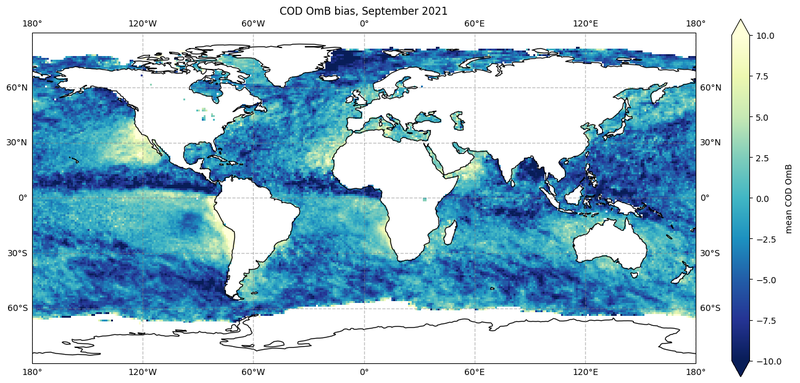Study WP5.5 Cloud and Aerosol Analysis
Description
This Study is led by Jeronimo Escribano from BSC and Kirsti Salonen from ECMWF. An additional contributor to this Study is Angela Benedetti from ECMWF.
The main ECV datasets from the Climate Change Initiative used in this Study includes Aerosol, Cloud, Soil Moisture and Water Vapour.
This study will run from September 2023 until August 2024.
The Study comprises of two parts. The first part is undertaking dust aerosol analysis with the BSC system (Jeronimo Escribano, BSC). This would involve constraining global dust aerosol simulations from the BSC MONARCH model with CCI data to produce dust analyses during the extraordinary event of June 2020. The second part is to undertake Cloud / Aerosol analysis with the ECMWF system (Angela Benedetti and Kirsti Salonen, ECMWF). This would involve joint assimilation of Aerosol and Cloud ECVs in the ECMWF IFS during June 2020 and September 2021 with the IFS 4DVar scheme in CAMS configuration.
Results and conclusions (July 2024)
Data sets for aerosol optical depth (AOD) and cloud optical depth (COD) from Sea and Land Surface Temperature Radiometer (SLSTR) have been evaluated and tested for assimilation in the ECMWF 4DVar system. While AOD observations from other instruments are operationally used in the Copernicus Atmosphere Monitoring Service (CAMS) configuration, CODs are a new source of information and provide an interesting avenue for assimilation of cloud information into the system. Figure 1 (below) shows observation minus model background (OmB) mean difference from a passive monitoring experiment for CODs. The statistics indicate positive mean difference over regions where there is typically persistent marine stratus. Negative mean difference on the other hand is seen in the inter-tropical convergence zone. The results are in line with similar monitoring done for Ocean and Land Colour Instrument (OLCI) reflectances, indicating that the mean differences would originate from the lack of stratiform clouds in the model rather than an observational or retrieval problem. Monitoring of the CCI SLSTR AOD observations indicates good and homogeneous data quality over sea, except the regions where bias related to desert dust is present.
Impact studies have been performed in depleted observing system framework to emphasise the impact originating from the new data sources. The baseline experiment includes assimilation of conventional and gps observations and the AODs and CODs are added on top of the baseline experiment. Assimilation of the CCI AODs generally decreases the magnitude of the modified normalised mean bias as well as the fractional gross error with respect to independent AERONET AOD data. Experimenting with CODs indicates that strict quality screening of the observations is required and even so, some degradation is seen especially in the short range temperature forecasts as verified using independent observations. The final experimentation with joint use of AODs and CODs is currently ongoing.

Figure 1: Observation minus model background mean difference for SLSTR COD observations, the covered period is September 2021.
The BSC study evaluates the ability to improve the dust forecast for the June 2020 Godzilla exceptional event by assimilating aerosol optical depth retrievals from the Sea and Land Surface Temperature Radiometer (SLSTR) instrument. The BSC MONARCH model without assimilation underestimates the dust plume crossing the Atlantic towards the Caribbean. The analyses were computed by assimilating SLSTR aerosol optical depth (AOD) from SU algorithm v1.14 retrievals using a linear model of uncertainties and using the reported uncertainties of the CCI product. Both assimilation experiments are in better agreement with the satellite retrievals than the simulations without assimilation. Analyses using the reported retrieval uncertainties show larger increments in AOD, with a finer spatial structure than the assimilation using AOD with a linear model of uncertainties. Possible underestimation of uncertainties over the ocean in the BSC data assimilation system was diagnosed in the observational space, suggesting that better skill of forecasts and analyses can be achieved if the uncertainties of the assimilated AOD over the ocean in the assimilation system are 2 to 4 times larger than current estimates.

Figure 2: Dust AOD from MONARCH runs without assimilation (first column), with assimilation of SLSTR AOD assuming a linear model of AOD uncertainties (second column), assimilation of SLSTR AOD with pixel-wise AOD uncertainties (third column), SLSTR AOD retrievals (fourth column) and Dust AOD SLSTR retrievals (last column). Rows are AOD snapshots for the 13, 19 and 27 of June 2020.

